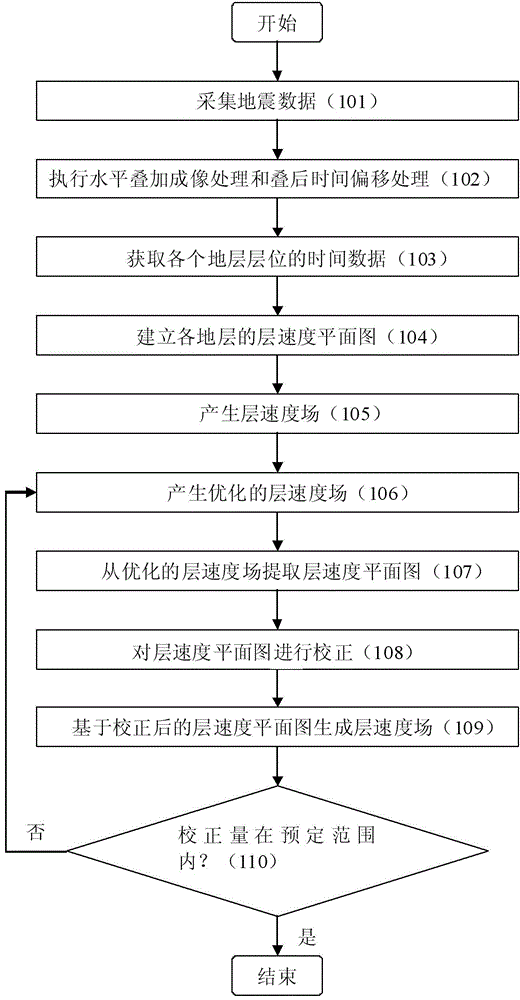The Modeling Method of Layer Velocity Model of Formation
A modeling method and layer velocity technology, applied in the field of seismic exploration, can solve problems such as difficulty in expressing velocity structure, divergence in velocity iterative process, difficulty in constraint of velocity volume interpolation and calculation, etc., and achieve a good global effect
- Summary
- Abstract
- Description
- Claims
- Application Information
AI Technical Summary
Problems solved by technology
Method used
Image
Examples
Embodiment Construction
[0028] Hereinafter, exemplary embodiments according to the present invention will be described in detail with reference to the accompanying drawings.
[0029] figure 1 A flowchart illustrating a modeling method of a layer velocity model of a formation according to an embodiment of the present invention.
[0030] In step 101, a seismic wave excitation method is used to generate seismic waves in the work area, and seismic data are collected.
[0031] In step 102, conventional horizontal stack imaging processing and post-stack time migration imaging processing are performed on the seismic data, thereby obtaining horizontal stack imaging data and post-stack time migration imaging data.
[0032] Horizontal stacking imaging processing and post-stack time migration imaging processing are relatively mature technologies. The more common post-stack time migration imaging processing is to perform post-stack time migration on the horizontal stacked imaging data after proper correction o...
PUM
 Login to View More
Login to View More Abstract
Description
Claims
Application Information
 Login to View More
Login to View More - R&D
- Intellectual Property
- Life Sciences
- Materials
- Tech Scout
- Unparalleled Data Quality
- Higher Quality Content
- 60% Fewer Hallucinations
Browse by: Latest US Patents, China's latest patents, Technical Efficacy Thesaurus, Application Domain, Technology Topic, Popular Technical Reports.
© 2025 PatSnap. All rights reserved.Legal|Privacy policy|Modern Slavery Act Transparency Statement|Sitemap|About US| Contact US: help@patsnap.com

